Android Phone Fans |
- Galaxy Nexus banned: US Court grants Apple temporary injunction
- Droid RAZR owners still waiting for ICS will be able to pull it manually on June 30
- Sprint pushing first software update to Samsung Galaxy S III
- Take offers with you with newly introduced ‘Save to Wallet’ feature
- The Evolution of Nexus: A look at all Google Nexus devices to date
- Jelly Bean Brings Liveness Upgrade to Android’s Face Unlock [VIDEO]
- Madfinger Games’ Dead Trigger coming to Google Play on July 2
- Google launches Glass Sessions to show off Project Glass concept
- Face Unlock gets a ‘liveness check’ in Android 4.1 Jelly Bean
- Report: Google also working on a 10 inch Nexus
- Foursquare Connected Apps brings info from other services into Foursquare
- 10 Burning Questions with Michael from Cloud.TV, developer of HD Widgets
- Sony NSZ-GS7 Google TV Blu-Ray player coming to Canada August 13th
- The Amazing Spider-Man now available for $7 in the Google Play Store
- Adobe will soon disallow new Flash Mobile installs and will not support Android 4.1 Jelly Bean
| Galaxy Nexus banned: US Court grants Apple temporary injunction Posted: 29 Jun 2012 05:56 PM PDT
This specific court case initiated last February, making this a very slow but definite stab at Google. As mentioned, this is only a temporary decision until the court reaches its final judgement. Apple also has to post a $96 million bond before this action takes place, just in case Samsung happens to pull out of this one. Things could get really ugly if Sammy can’t prove its innocence in court, though. It might even result in a permanent injunction. The official statement is not yet available, so the specifics are still lacking. Such decision would need to have proof of a patent’s validity, though. As well as proof that the sale of the infringing device would harm that of the infringed. Four patents were brought to the table by Apple, of which only one seems to be the major reason for this decision. Patent number 8,086,604 refers to a device searching multiple sources through a single interface (much like Siri). This functionality happens to be deeply integrated into the Android OS, making it much harder for Google to simply send an update and correct the issue, if necessary. Apple has also won an injunction on the Galaxy Tab 10.1 days prior to this decision. The same judge has stated that she might also be making the final decision this Sunday, and we will be here to give you all the details. We just can’t have one weekend of celebration in the Android world, can we? We are about to get the Android 4.1 Jelly Bean update, and now Apple has ruined our weekend again. Let’s just hope this one doesn’t extend to the Nexus 7, though sending the Galaxy Nexus to the bench is already a large enough loss. Let’s keep our hopes up. This is a big deal, guys. [Source: FOSS Patents] |
| Droid RAZR owners still waiting for ICS will be able to pull it manually on June 30 Posted: 29 Jun 2012 02:42 PM PDT
Own the Droid RAZR or Droid MAXX with Verizon and still haven’t received your update to Android 4.0? Tomorrow is your lucky day. According to the twitterings of one VZW rep, on June 30th all users can access their system setting and navigate to the software update dialog to be bumped up to the latest version of Android. In case you aren’t near a calendar, that’s tomorrow. Provided this goes through as stated, it should end the prolonged wait some users have been experiencing. And with that the long road to Ice Cream Sandwich will end for Droid RAZR owners. |
| Sprint pushing first software update to Samsung Galaxy S III Posted: 29 Jun 2012 02:24 PM PDT
Sprint’s Samsung Galaxy S3 isn’t even in the hands of all customers who ordered one, but its first over-the-air software update is ready to be installed. The update is nothing major; the results of which will likely go unnoticed. The singular item in the changelog? A security update. The minor patch will bring the phone’s software to version L710VPLF9 and is going out today. Those purchasing a new Galaxy S III will receive the update after completing activation. [Sprint via AndroidPolice] |
| Take offers with you with newly introduced ‘Save to Wallet’ feature Posted: 29 Jun 2012 01:41 PM PDT
Find a good offer but not ready to act on it? A new feature coming to Google Wallet will allow you to quickly save the deal for future use, and reminders will make sure you get in on the savings before time runs out. Google announced the new “Save to Wallet” feature at a developer session at Google I/O, which includes an API that will be made available to a select group of retailers. Save to Wallet will appear as an option on a store’s website, and choosing to add the deal to your account will let you take advantage by presenting the digital coupon in store or by simply tapping your device at checkout (thanks to NFC). Google hopes by bridging the gap between online and physical stores and sharing offers between the two that the number of Google Wallet users will grow. Google also hopes to do the same with payment cards, which can also be saved directly to a Google Wallet account. Save to Wallet will be available through a limited number of retailers to start, but as the service grows Google hopes to introduce more partners. [via AndroidCentral] |
| The Evolution of Nexus: A look at all Google Nexus devices to date Posted: 29 Jun 2012 12:36 PM PDT It all started as a little experiment. A couple months after Motorola, Verizon, and Google launched the first Motorola Droid as the exclusive launch device of Android 2.0 Eclair, Google introduced the Nexus One in January of 2012. Manufactured by HTC, the phone would not only act as the first device to run Android 2.1, but it would do so while attempting to change the way consumers made their smartphone purchases. Rather than heading to a carrier store and signing away the next two years of mobile independence to purchase the handset at a subsidized pricing, Google would offer the phone directly at full price and give buyers the freedom to choose their own service provider. But the experiment failed and Google soon dropped out of the device sales game. Nexus One
Back then the Nexus One was top of the line hardware. It featured a 1GHz Snapdragon processor, 3.7-inch 480×800 AMOLED display, and a 5MP camera. Today these specs wouldn’t even suit most mid-range devices, but the N1 will forever stand as one of the best examples of an Android handset ever produced. It also set the precedent for future Nexus releases. Each handset would usher in a new version of Android, and Google promised that all manufacturers would have a chance to earn themselves a Nexus device in their lineup. But the Nexus One was not commercially successful, despite Google ditching its initial strategy and eventually launching the handset via the normal carrier model. Later in 2010 it became the first handset to be treated to Android 2.2 Froyo. Hardcore fans and developers lived and died by the Nexus One, its trackball becoming an Android icon, but soon better hardware was making its way to market and the N1 slowly fell from popularity. Nexus S
By December 2010 Google was ready to launch the next iteration of Android, Gingerbread, and a new Nexus device was in order. This time Samsung was tasked with developing the phone after the tremendous global popularity of their Galaxy S phone. Largely based on the same hardware, the Samsung Nexus S featured a larger display than its predecessor at 4.0 inches, this time utilizing Super AMOLED technology to provide brilliant image quality despite featuring the same screen resolution as the Nexus One. The phone still ran on a 1GHz processor, but it was built around Samsung’s Hummingbird platform. New features included a front-facing camera and NFC support, both slightly ahead of their time but vital to shaping the future of Google’s mobile OS. The Nexus S launched with a more traditional sales model and soon became a hit among Android die-hards, as with Nexus One before it. The phone became the standard for Android 2.3 development, but once again more powerful hardware and new software advancements began to make the handset feel dated in some aspects. Cleaning up the Android code to offer better performance meant that the Nexus S would not soon be relegated to obsolescence, but for the biggest Android update to date Google needed something that offered a bit more. Galaxy Nexus
After branching off of the original Android tree to develop Honeycomb, a tablet-oriented version of the OS that did not feature its own Nexus device, Google decided it was time to bring things back together. They did so with the launch of Android 4.0 Ice Cream Sandwich and another Samsung-made phone, the Galaxy Nexus in December 2011. This time based around the Galaxy S II, the Galaxy Nexus was the first in the line to feature multi-core processing, an HD display, and LTE connectivity. The hardware provided the perfect platform for the sweeping changes the Android Team made to Ice Cream Sandwich’s user interface and functionality, and the device still stands as the development platform for the newly announced Jelly Bean iteration of the operating system. Android 4.1 was not without its own launch device, however. Nexus 7
Rumors of a Nexus tablet can be traced all the way back to the Nexus One and Nexus S, when Apple’s iPad was just starting to take hold of the world. With the launch of Android 4.1, the rumors finally became a reality. Designed by ASUS and based around NVIDIA’s Tegra 3 platform, the 7-inch slate features quad-core processing and all the other marks of a modern tablet deemed worthy of Google developer status. This of course includes features like NFC and wireless connectivity ranging from WiFi to Bluetooth. But more so than it’s hardware or new software, the Nexus 7 will be known as Google’s first big push back into device sales since the Nexus One. While the Galaxy Nexus recently became available for purchase directly from Google, the Nexus 7 adopts an aggressive pricing strategy in hopes to undercut the competition and bring the tablet to as many users as possible. But the Nexus 7 would not be the only new device Google would offer for sale, nor would it be the most unique form factor. Nexus Q
Up to this point, all Nexus devices took on a familiar form. Even the Nexus 7 didn’t buck the trend, despite its larger size. The Nexus Q isn’t so easily categorized, a futuristic sphere designed to act as a social media streaming hub. Controlled by Android devices, the Nexus Q can connect to a TV or set of speakers to play back music, video, and web content. It is built up using some of the same hardware found in the Galaxy Nexus and runs Android, but Google isn’t planning to sell the device as some sort of Android PC. The Nexus Q is more about the experience of interacting with others, using the cloud to store and share music libraries or movies. The Future of NexusSo what’s next for the Nexus line? Perhaps a more obvious choice than the Nexus Q may have been a Nexus device running Google TV, the internet TV platform Google had little to say about during the I/O show that saw the unveiling of Android Jelly Bean, the Nexus 7, and Nexus Q. It makes sense for Google to feature a Nexus product for each of their Android-based platforms, from tablet to television. And what about future Nexus smartphones? We’d guess a quad-core processor and HD display is almost a given. But can we expect the release pattern to remain the same? And if so, who is on tap for the next edition? While it can’t be said for certain, the launch of two new Nexus devices simultaneously suggests Google may be shifting from their one-device-a-year flagship release strategy. The timing of Jelly Bean flips the script a bit, and we may have to wait for a new Android version to see the next Nexus. However, recent whisperings suggest that Google may launch an entire lineup of Nexus phones from various manufacturers later in the year and sell them all directly via their Google Play Store. One thing is for sure, the Nexus has been the pulse of Android, both in the realms of software and hardware, since the line was first introduced in January of 2010. Each new device sets a precedent for all those to follow, offering an example of how to beautifully marry advancing software functionality with powerful hardware design.
|
| Jelly Bean Brings Liveness Upgrade to Android’s Face Unlock [VIDEO] Posted: 29 Jun 2012 12:35 PM PDT Remember when the Galaxy Nexus launched and everyone got all hot and bothered when it was tricked by a pic? With this week’s launch of Android 4.1 Jelly Bean on the Nexus 7, Google has improved the Face Unlock feature with a “Liveness Check” that requires the subject to blink to prove they’re a real person. I would still argue that the Face Unlock feature is less for advanced security and more for convenience. Rather than swiping a pattern every time, you can simply hold your tablet or phone up and you’re done. If you really need advanced security for your device you should be looking for a much better system. The “Liveness Check” update is a nice little improvement, but not one I’ll personally use. As previously stated, I’d use Face Unlock for convenience (although I don’t) and adding a “blink check” is an additional step: at that point I might as well use the pattern unlock. Still, some might be reassured by the inclusion and it’s nice to see Google listening and acting on user feedback. Question: if the original Face Unlock was fooled by a pic, could the Face Unlock Liveness Check be tricked by an animated pic/gif? |
| Madfinger Games’ Dead Trigger coming to Google Play on July 2 Posted: 29 Jun 2012 11:48 AM PDT
Madfinger Games, the folks behind popular title Shadow Gun, will release their zombie-fied first person shooter Dead Trigger on the Google Play Store on July 2nd. We had a chance to check out the horror game at this year’s E3, and it looks absolutely stunning. Graphics are right up there with the best and gameplay wasn’t too shabby either. Given Madfingers track record we are eager to give the full game a spin. Check out the latest trailer below. |
| Google launches Glass Sessions to show off Project Glass concept Posted: 29 Jun 2012 11:31 AM PDT Google’s Project Glass won’t be ready for general consumption for some time. Developers are getting an early look at prototype devices early next year (we’ll be grabbing a few), and the plan then is to refine the device for a public release closer to 2014. Obviously, the concept still needs a bit more time in the oven. They don’t call it futuristic for nothing. For those intrigued by what Google is doing with Glass, a new series of videos has launched called Glass Sessions. The first of which shows how Glass can be used to capture all the special moments that come along with raising a child, as well as easily share live video via a Hangout with a parent in a far away place. It’s just one of the many ways Google hopes to show the usefulness of Glass in our everyday life. While it may be a bit hard to imagine using a device like Glass right now, the video perfectly demonstrates how seamless using the heads-up display can really be. Sure, it might take some time to get past how goofy you will look with a pair strapped across your brow, but there is no denying that Project Glass opens up a world of possibilities. [via Google+] |
| Face Unlock gets a ‘liveness check’ in Android 4.1 Jelly Bean Posted: 29 Jun 2012 11:00 AM PDT
Ice Cream Sandwich’s Face Unlock feature has received plenty of criticism, most of which centers around the accuracy and reliability of using the method to access one’s phone. For those still worried that Face Unlock could be spoofed using a still photo of the phone’s owner, Google has a response in Android 4.1 Jelly Bean. A new “liveness check” can be enabled that will require a user to blink before the device will unshackle the lockscreen. The addition adds an extra layer of security to the feature, but it still remains more of a neat party trick than anything super useful. Raise your hand if you use Face Unlock as the main way to access your device. I’m guessing not many do. While cool, the process takes a bit more time than simply typing in a pin or swiping a pattern. With the added blink procedure things slow down even more. And even with the additional security, Face Unlock still doesn’t feel like the most reliable way to keep your phone under lock and key. Still, it is great to see Google continuing to improve on the feature. If they can do with Face Unlock what they have done with things like Voice Search and speech dictation, then someday it may become a true killer feature. [via TechCrunch] |
| Report: Google also working on a 10 inch Nexus Posted: 29 Jun 2012 08:25 AM PDT Just days after a 7 inch Nexus device was announced and made available for pre-order, a new rumor suggests Google is looking to bring another tablet to the Nexus line. This time, a 10 inch variant might be in the works. DigiTimes reports Google’s supplier, WinTek, is shipping 10 inch OGS panels and that Google has been the primary recipient of said shipments. The rumor is a tad believable as earlier ones suggest Google is working on more than one tablet, and that they’ll have five different Nexus devices out by the end of the year. We’re not sure what to expect from a 10 inch offering, though if the rumors are true we suspect it’ll come with a lot more flexibility in terms of ports, storage, and connectivity, and that it’ll definitely be more expensive than the 7 inch variant. Do any of you event want a 10 inch offering? Will it come down to the feature set or pricing for you? Let us know in the comments below! |
| Foursquare Connected Apps brings info from other services into Foursquare Posted: 29 Jun 2012 07:19 AM PDT Foursquare has released a preview of connected apps, a new feature for their check-in service that will allow users to get everything they need from within the app. Foursquare currently only gives you tips, suggestions, and check-in services made for their own service, but with connected apps you can pull in recommendations and info from other services without having to leave the app. For instance, if you check into an airport in a certain city, The Weather Channel will feed you the forecast right to you on the check-in page. If you happen to go to a restaurant after leaving that airport, you’ll find drink and food recommendations for that particular place from your friends from services like Untappd and Foodspotting. It’s a great new feature that we’re excited to see on its way to the platform. Find more information at Foursquare’s technical blog here. Better yet, you can go ahead and download the app from the Google Play Store today. Have a look below for the 11 launch partners Foursquare’s gone with and look forward to more services coming in the future.
|
| 10 Burning Questions with Michael from Cloud.TV, developer of HD Widgets Posted: 29 Jun 2012 07:00 AM PDT
This was accomplished by mixing variety, aesthetics, customization and flexibility. HD Widgets offers a flurry of clock, weather and settings widgets in different sizes, colors and looks. It is definitely one of those must-see applications for every Android user. We could not pass up the chance to sit with one of the Cloud.TV developers with our 10 Burning Questions, so let’s dive in! Phandroid: How did you get started with Android Development?
Phandroid: What phone do you personally use?
Phandroid: What was your biggest challenge in developing HD Widgets and Cloudskipper?
Phandroid: Cloud.tv is very well known for its great support team. How did you manage to get such reputation? Do you spend much of your time responding to your users’ e-mails?
Phandroid: Monetization – In terms of driving revenue, can you tell us about your experience, your strategy, and the overall potential?
Phandroid: What do you want to see in future versions of Android?
Phandroid: Do you develop for other platforms and how does Android compare to those platforms?
Phandroid: If you could give one tip to fellow Android Developers, what would it be?
Phandroid: Tell us one thing that most people don’t know about you.
Phandroid: On your sidebar, do you use weather or power control toggles? ;)
We know you guys love all these awesome widgets, so please support Cloud.TV by checking out its apps in the Google Play Store. These are very good applications, so you might end up being one of the many fans. HD Widgets continues to be my go-to widget app, so we definitely recommend it. Want to get involved in Developer Appreciation Month? Contact us and start your message with “Developer Appreciation Month”. Don’t miss your chance to win! Sign up for our Developer Newsletter: it’s required to win most of our contests and it’ll feature some huge announcements that you won’t want to miss. |
| Sony NSZ-GS7 Google TV Blu-Ray player coming to Canada August 13th Posted: 29 Jun 2012 05:56 AM PDT Folks in Canada will be able to own the Sony NSZ-GS7 Blu-Ray player that comes equipped with Google TV August 13th. Sony’s started taking pre-orders for the device this past Wednesday if you want to stake your claim to one. With it will be a standard Blu-Ray player with an internet experience that will only get better from here. It comes with a very interesting dual-sided remote that’ll be great for navigating Google TV and the web. Head to Sony’s site or head to your local Sony shop if you’re interested. If you haven’t already, be sure to check out our review of the player here. [via CBC] |
| The Amazing Spider-Man now available for $7 in the Google Play Store Posted: 29 Jun 2012 05:42 AM PDT Gameloft’s made The Amazing Spider-Man available in the Google Play Store starting today. For $7 you’re getting what looks to be one of Gameloft’s better games. With 25 missions taking place in Peter Parker’s city of origina, New York City. You can jump from rooftop to rooftop using your web, and you can also use that same web to fend off the foes standing in Spider-Man’s way. We hear this game plays a lot like Web of Shadows, a console game that wasn’t all that bad. Go ahead and check it out in the Play Store if you’re not against coughing up the money. |
| Adobe will soon disallow new Flash Mobile installs and will not support Android 4.1 Jelly Bean Posted: 29 Jun 2012 05:20 AM PDT Adobe have announced that their mobile Flash solution for Android will soon be restricted in ways that many of us can’t help. This past November it was announced that the plugin would no longer be actively developed. This didn’t mean that it would be unavailable in the Play Store, but Adobe wasn’t going to support it save for critical bug fixes. Adobe made it seem as if the plugin wouldn’t come to Android 4.0 Ice Cream Sandwich, but it eventually did. It seems Adobe’s seriously serious about getting rid of it come August 15th, though, as they will be restricting new downloads of the plugin in the Google Play Store. If you grab it now and keep it on your device you’ll continue to receive security updates, but if you want it at any point after that you won’t be able to go through the official channels. And Adobe doesn’t recommend installing the plugin on Jelly Bean as they won’t be testing it with the update and are unsure how it will affect performance and stability. Some people may still get Flash Mobile or Flash Lite support through their OEMs’ efforts, but Adobe itself isn’t going to have its hands in the mobile space anymore. In short, if you want Flash you’d better download it now. And if you want to keep it, don’t do a factory reset or get a new device. Oh, and if you have Jelly Bean feel free to install the plugin, but don’t come to us for support because Flash Mobile is now the red-headed step child. [via Adobe] |
| You are subscribed to email updates from Android Phone Fans To stop receiving these emails, you may unsubscribe now. | Email delivery powered by Google |
| Google Inc., 20 West Kinzie, Chicago IL USA 60610 | |

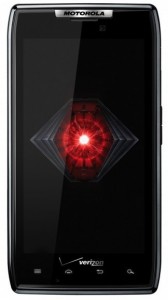

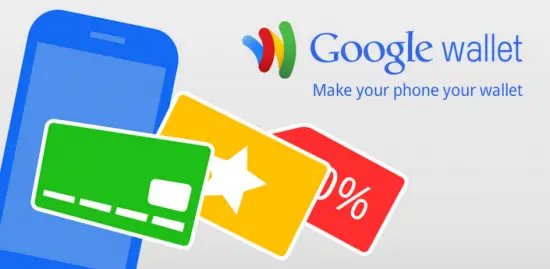
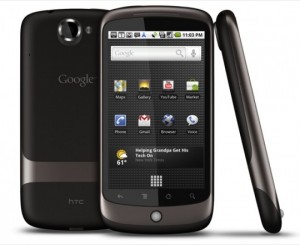
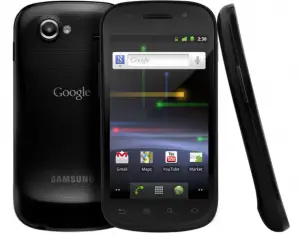
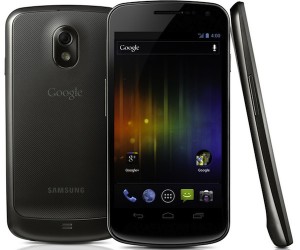
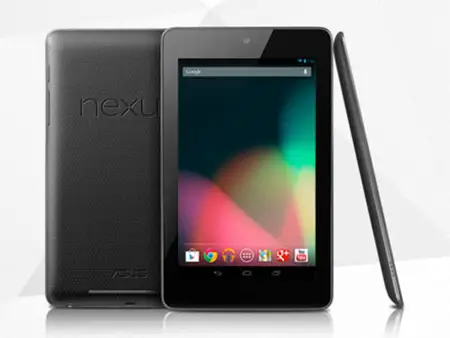
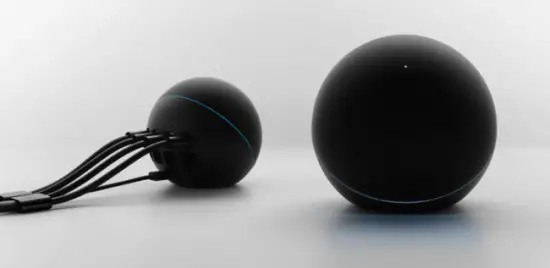


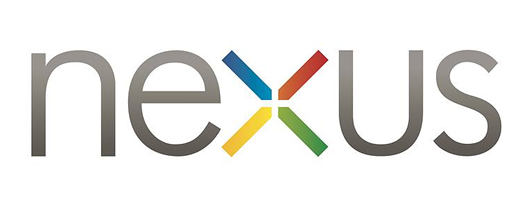




No comments:
Post a Comment